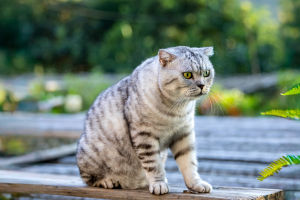Lykkers, have you ever wondered what life is like beneath the vibrant coral reefs of the western Pacific? Today, we dive into the fascinating world of the Coral Grouper, a sturdy and impressive fish that thrives in these tropical waters.
Known scientifically as Epinephelus corallicola, this species is not only a remarkable part of marine ecosystems but also an important edible fish for coastal communities. Join us as we explore its features, behavior, and value.
Classification Status
The Coral Grouper belongs to the animal kingdom, phylum Chordata, class Actinopterygii, and order Perciformes. Its official scientific name is Epinephelus corallicola, placed under the grouper genus. While some earlier studies suggested it might belong to the genus Plectropomus, mainstream classification recognizes it as part of the grouper family based on unique characteristics of its pharyngeal teeth.
This classification helps scientists understand its evolutionary relationships and ecological role.
Physical Characteristics
We can quickly spot the Coral Grouper by its classic grouper shape: a thick, laterally compressed body covered with ctenoid scales and a lower jaw with relatively few teeth. Its pharyngeal teeth are well developed, allowing it to crush the shells of crustaceans efficiently.
The species can grow up to 49 centimeters in length, making it a noticeable presence in reef environments. These traits not only define its identity but also show how it has adapted to its specific feeding and survival strategies.
Distribution Range
The Coral Grouper is mainly found across tropical waters of the western Pacific. Its range stretches from the coasts of Asia to the Solomon Islands and the Mariana Islands, and south to the northern waters of Australia. Typically, we find this fish inhabiting coral reef zones at depths ranging from 20 to 80 meters. This wide distribution highlights its adaptability to different reef conditions and its role in diverse marine ecosystems.
Ecological Habits
This species has a unique approach to hunting. During the day, it often hides in reef caves, observing its surroundings carefully. Interestingly, it sometimes teams up with giant moray eels (Muracnidae) to hunt—driving prey toward the eel's hiding spot for a coordinated catch.
Its diet mainly consists of small fish and crustaceans, which it crushes with its specialized pharyngeal teeth. By watching the Coral Grouper, we see a perfect example of how cooperation and strategy can help a predator thrive.
Reproductive Traits
The Coral Grouper follows a typical reproductive pattern of the grouper family, which includes hermaphroditism. We know that individuals initially mature as females. Once they reach about 30 centimeters in length, some begin to change gender, becoming male.
During the breeding season, these fish gather in specific reef areas to spawn. Their fertilized eggs drift with ocean currents, developing into the next generation. Observing this reproductive behavior reminds us of the intricate cycles that sustain marine life.
Economic Value
The Coral Grouper holds significant economic importance. Coastal countries in Southeast Asia and Oceania value it as a high-quality edible fish. Common fishing methods include longline and gillnet techniques.
Research up to 2018 has classified it as an economically valuable species, although details about its aquaculture remain limited. For us, understanding its economic role also highlights the need to balance harvesting with conservation to maintain healthy reef ecosystems.
Exploring Reef Life
Lykkers, the Coral Grouper is more than just a reef fish—it gives us a glimpse into the incredible balance of life underwater. From its strong jaws and clever hunting methods to its fascinating reproductive changes, it shows us how adaptability and teamwork help creatures thrive.
Next time we explore a tropical reef, let's take a moment to admire not only the colorful corals but also amazing species like the Coral Grouper that bring these underwater worlds to life. Together, we can appreciate and protect the rich diversity of the ocean.
Red Sea Coral Grouper
Video by Diving Forever


